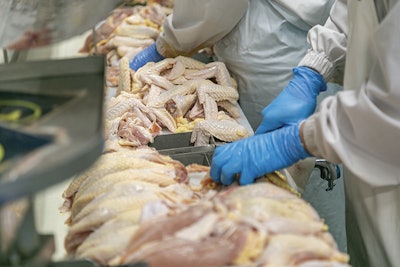
While the emergence of new COVID-19 strains have the potential to derail any return to normality, there remains optimism that the outlook for the global economy is positive this year, and that will be good for the Asian poultry industry.
Some producers in Asia are witnessing strong demand and strong prices, while others have seen demand fall due to lower exports and difficulties in sourcing labor, but the expected reopening of economies around the world will particularly benefit Asia’s poultry meat exporters, notes Rabobank in its Poultry Quarterly Q1 2022.
Not everything is positive for the region’s poultry industry. China, for example, continues to maintain zero tolerance for COVID-19 using local lockdowns to control it, and margins in the poultry industry have been slim at best. Thailand is suffering labor shortages. All producers are experiencing high input costs, be they for feed or energy, and these, along with high shipping costs, are expected to continue.
Those producers able to survive those difficulties, however, should see improving conditions as the year progresses, with growing demand and still tight supplies benefitting prices.
China
As 2021 drew to a close, prices for broilers in the country started to improve, pushed upwards by rising pork prices. However, demand for broiler meat in China has been weak and, even with these increases, prices have hovered around breakeven.
The opening months of 2022 may witness a contraction in broiler production, although total demand for poultry meat is expected to improve as the year progresses.
Prices for yellow birds were relatively stronger during the fourth quarter of last year, mainly due to tight supplies following production declines.
China’s poultry imports have been falling and were down by 4% over the first 10 months of 2021, compared to the same period in 2020.
China’s zero tolerance policy towards COVID-19 is expected to continue hampering demand for poultry meat in the country.
Japan
Japan has a positive outlook for 2022. The county witnessed record high prices for breast meat during the second half of 2021, while leg quarter prices have remained firm, although below the levels achieved in 2020.
Consumption in Japan rose by 2% during the first nine months of last year.
Production, however, declined during the first six months of last year, falling by 1%, mainly as a consequence of avian influenza (AI) outbreaks. While there was a pick-up in production during the third quarter, AI continued to present challenges.
To compensate for weak local supply, Japan has been importing more chicken. This, however, has been complicated by difficulties in Thailand, which had been sending more product to the country.
Demand in Japan is expected to remain strong this year. Prices will be strong helped by low stocks, high beef prices and low production.

Thailand
The Thai poultry industry experienced a particularly difficult 2021, due to lockdowns, plant shutdowns and limited labor supply. August alone saw a 10 to 15% drop in production.
In an effort to compensate for labor issues, the industry is switching to producing less labor-intensive products.
As 2021 closed, there was some relief from the low prices being achieved by the industry as local and export demand picked up. Export volumes were strong in the first half, but dropped sharply in the third quarter. The last quarter, however, saw some recovery in volumes but prices remained low.
The Thai industry should witness improvements this year, driven both by an improving local economy and strong export demand, but labor issues will need to be resolved if the industry is to take advantage of these changed circumstances.
India
India witnessed an improved 2021 with both strong consumer and business demand, and most major businesses are thought to have achieved double digit growth between April and September. While sales may have been higher, rising feed costs have impacted margins in the country.
Feed prices are expected to remain a challenge in India, however, demand is expected to continue growing this year.
Which are Asia’s largest poultry, egg producers?
www.WATTAgNet.com/articles/43627


















